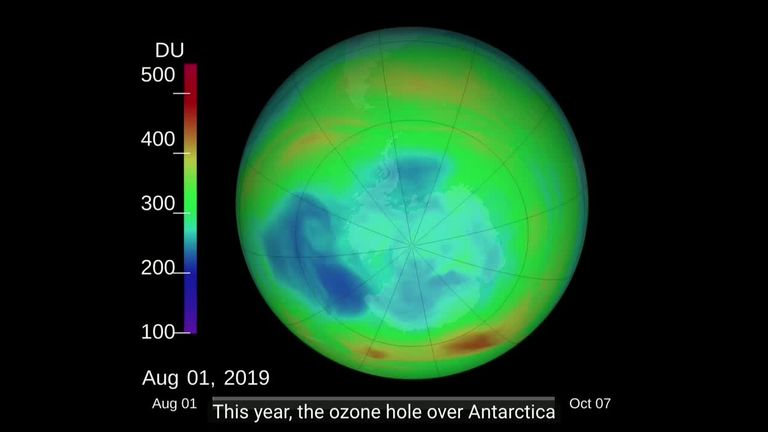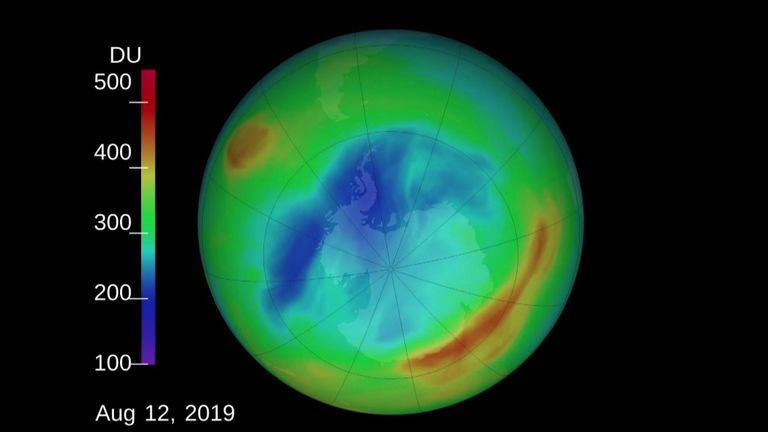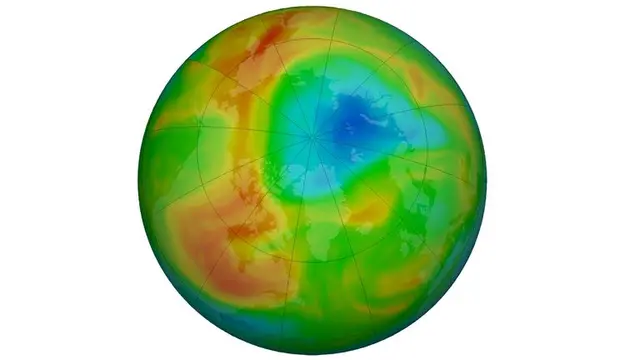The largest ever hole that has been detected in the ozone layer over the Arctic has closed just weeks after its sudden formation.
It reached its peak size in March, and, according to scientists working at the Copernicus' Atmosphere Monitoring Service (CAMS), the hole wasn't man-made.
Instead it was the result of a particularly strong polar vortex over the Arctic.
It also isn't tied to a reduction in pollution associated with the
coronavirus
lockdown.
"COVID-19 and the associate lockdowns probably had nothing to do with this," the researchers said, explaining it had no relation to changes in air quality.
The polar vortex is a current in the atmosphere which circles around the Arctic, keeping in the cold air.
Ozone holes are typically spotted developing above Antarctica, which is normally colder than the north pole, and are seasonal. They are rare in the Arctic.
But when temperatures dip low enough they can lead to the formation of polar stratospheric clouds (PCS) which can activate ozone-depleting chemicals in the atmosphere.

Warm weather is keeping the ozone hole small.
A few years ago, scientists detected a
massive and mysterious rise
in a banned ozone-eating chemical which they believed was originating from around China, Mongolia and the Korean peninsula.
They have warned that unless the production of chlorofluorocarbons (CFCs) is identified and stopped, the recovery of the ozone layer will be jeopardised.
CFCs were in wide use as refrigerants and propellants in aerosols and refrigerators until the 1980s, when emergency action by the UN saw a number of climate change treaties ratified by all member states - the first treaties to achieve this.
Despite all countries having ratified the Montreal Protocol, which seeks to reduce CFCs in the atmosphere, rogue polluters have seen emissions rise by 25% since 2012.

Image:The Antarctic ozone hole is at its smallest since records began. Pic: NASA
Last October, NASA said the hole in the ozone layer above Antarctica had
shrunk to its smallest
since it was first discovered in the 1980s due to abnormal weather patterns.
 简体中文
简体中文





